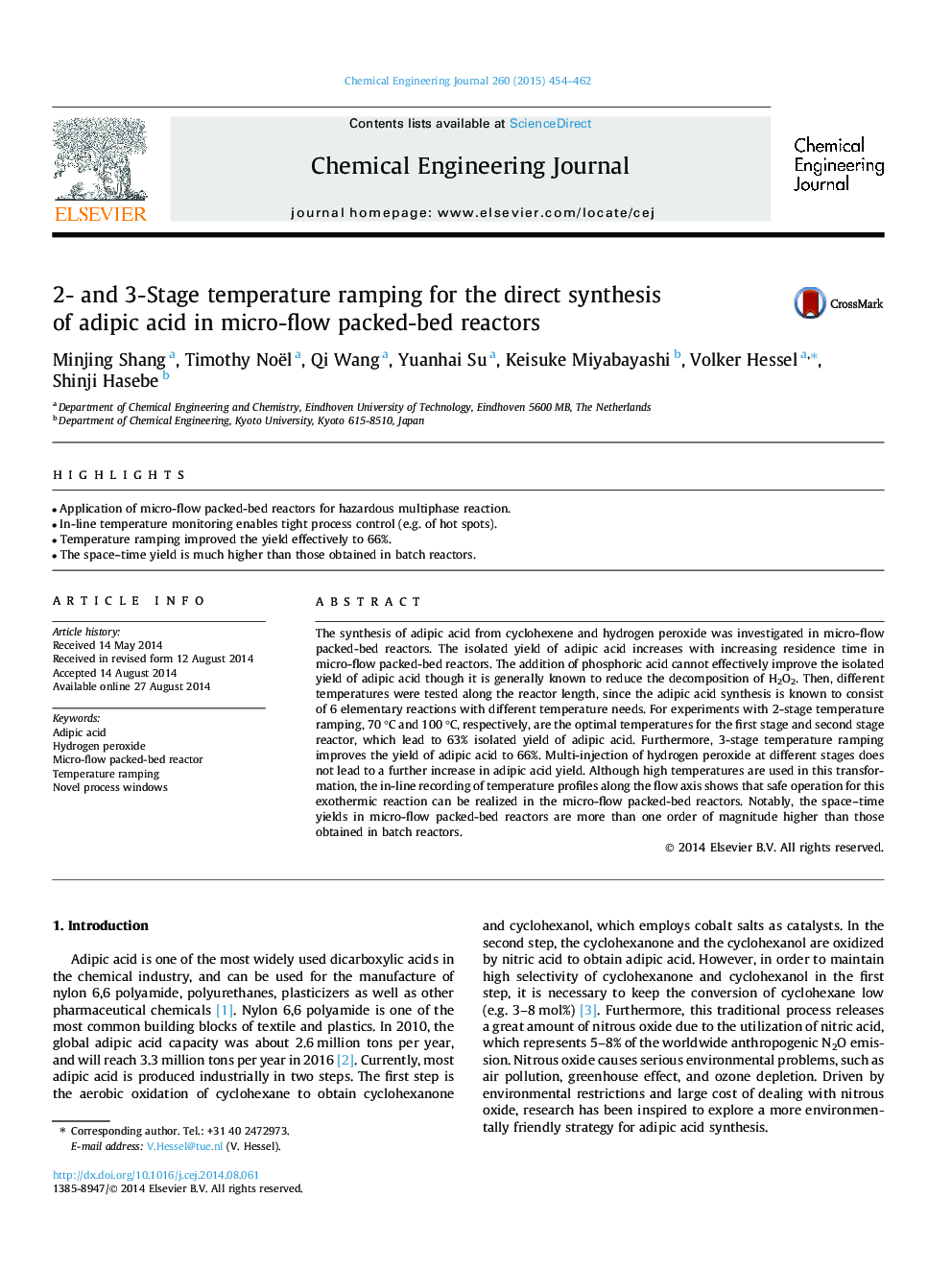| کد مقاله | کد نشریه | سال انتشار | مقاله انگلیسی | نسخه تمام متن |
|---|---|---|---|---|
| 146798 | 456378 | 2015 | 9 صفحه PDF | دانلود رایگان |
• Application of micro-flow packed-bed reactors for hazardous multiphase reaction.
• In-line temperature monitoring enables tight process control (e.g. of hot spots).
• Temperature ramping improved the yield effectively to 66%.
• The space–time yield is much higher than those obtained in batch reactors.
The synthesis of adipic acid from cyclohexene and hydrogen peroxide was investigated in micro-flow packed-bed reactors. The isolated yield of adipic acid increases with increasing residence time in micro-flow packed-bed reactors. The addition of phosphoric acid cannot effectively improve the isolated yield of adipic acid though it is generally known to reduce the decomposition of H2O2. Then, different temperatures were tested along the reactor length, since the adipic acid synthesis is known to consist of 6 elementary reactions with different temperature needs. For experiments with 2-stage temperature ramping, 70 °C and 100 °C, respectively, are the optimal temperatures for the first stage and second stage reactor, which lead to 63% isolated yield of adipic acid. Furthermore, 3-stage temperature ramping improves the yield of adipic acid to 66%. Multi-injection of hydrogen peroxide at different stages does not lead to a further increase in adipic acid yield. Although high temperatures are used in this transformation, the in-line recording of temperature profiles along the flow axis shows that safe operation for this exothermic reaction can be realized in the micro-flow packed-bed reactors. Notably, the space–time yields in micro-flow packed-bed reactors are more than one order of magnitude higher than those obtained in batch reactors.
Journal: Chemical Engineering Journal - Volume 260, 15 January 2015, Pages 454–462
